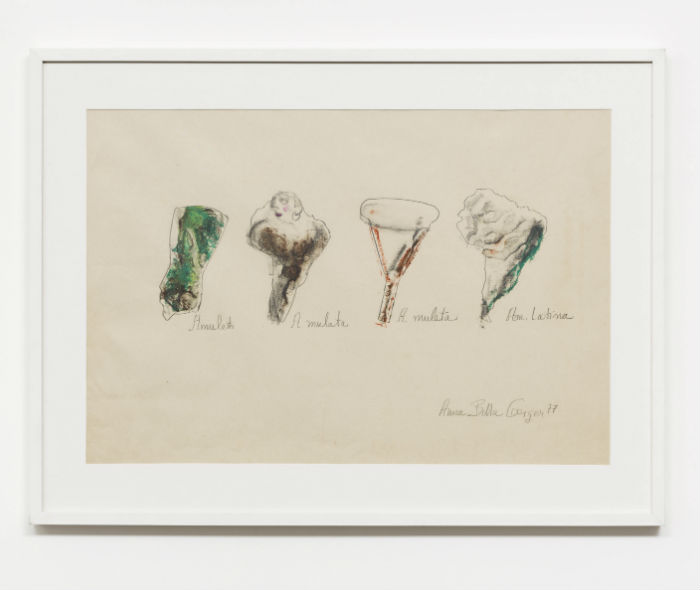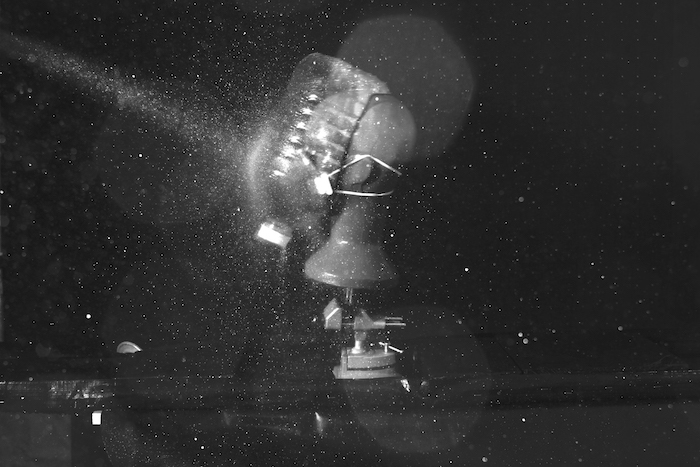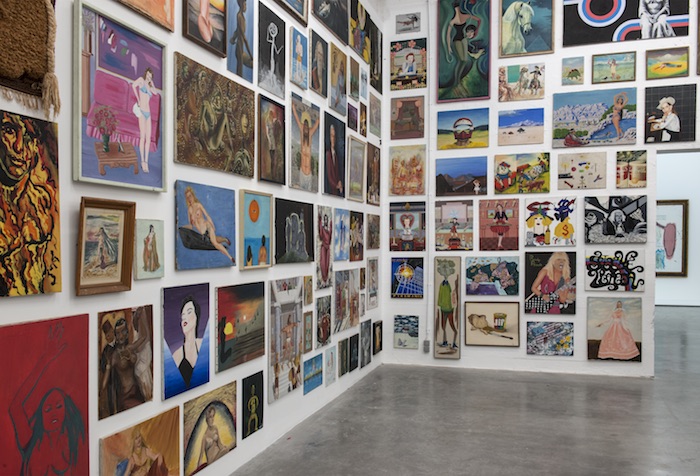At one level Brussels revels in the clichés of it north European traditions. So at the end of a warm day at Art Brussels art fair – whose fiftieth anniversary edition in April drew ArtReview to the Belgian capital – ArtReview found itself happily quaffing a chalice of Tripel Karmeliet beer. But hearty eating and Art Nouveau architecture are nowadays just the backdrop to an increasingly complicated, diverse city. Ethnically mixed and economically divided, a French-speaking island within the Dutch-speaking region of Belgium, an administrative layer-cake of dysfunctional government, Brussels shouldn’t really work but it somehow does. And if the Brussels art scene has become more international in recent years, with American, Brazilian and French galleries setup up local branches, then globalism and post-colonialism seems to be a thread running through ArtReview’s 48 Trappist beer-driven hours in the city.

So at Art Brussels, winner of the 2017 Belgian Art Prize Otobong Nkanga is given a presentation; Nkanga’s largescale video projection In Pursuit of Bling (2014) sees the article in semi-darkness, showering herself with handfuls of golden glitter, handling and eating pieces of rare earth stones, or twirling sheets of some darkly transparent glasslike material, hiding herself in the light reflected in them. An ambiguous, ironic visual poem about Africa’s unwanted identity as the perpetually exploited store of raw materials for the West, In Pursuit of Bling circuitously touches the nerves of Europe’s (and perhaps particularly Belgium’s) dismal history of colonialism in Africa, while at the same time inventing a suggestive, afro-futurist reclamation of wealth, abundance and adornment.

Stepping out of the fair, ArtReview only has to grab a tram to Brazilian powerhouse gallery Mendes Wood DM to find the Global South alive and kicking. Veteran Brazilian artist Anna Bella Geiger’s work since the 1970s has treated the situation of Latin America through the various frames of gender, class and ethnicity. Geiger uses visual metonym with acute sensitivity – a watercolour Amuleto, A Mulata, A Muleta, Am. Latina (1974) plays on the shape of the continent, morphing from an ‘amulet’, to a ‘mulato’ (mixed race) woman, to a ‘muleta’ (a bullfighter’s red cloth). Ethnicity and gender get shortcircuited in Geiger’s photo-works, for example in which ‘ethnographic’ images of indigenous women are restaged, pose for pose, by white women. Upstairs, the younger Letícia Ramos is also dislocating our perception of human bodies, with large, densely dark monochrome photographs, whose sombre subjects are human mannequins – a hand, a head, a torso – subject to blasts of what might be powerful jets of water. There’s a subtext of mechanical image-making and mechanised humanity, and the accompanying notes talk of early twentieth century ‘time and motion’ studies…

Perhaps ArtReview’s a little heatstruck by the unseasonable heatwave that’s swept into Brussels, but as it trundles on the 82 tram past a graffiti that reads ‘NO BORDERS NO GENDER’, it can see a connection between Ramos, Geiger and Thai artist Korakrit Arunanondchai’s show at CLEARING. Arunanondchai’s A workshop for peace: nowhere to go: let the song hold us: in a room filled with people with funny names 4, is a delirious mix of posthuman technoaesthetics and philosophising on the future of humanity; giant, exuberant sculptures comprised of clay models of human and non-human forms, glowing glass orbs and thickets of luminous fibreoptic cables are home to a repeating glazed ceramic form, a model of the tall modernist slab of the United Nations building in New York. The centrepiece is a video, with history in a room filled with people with funny names 4 (2017), in which ideas of history, spirituality, ecology, genetic evolution and biological decay swirl around each other, the UN building a stand-in for new ways of ‘thinking about the subject of togetherness’.

This emphasis on corporeality faced with the technologies of the future are a concern of art right now. But wandering over to Brussels’ pioneering contemporary art centre (fittingly housed in an old art deco brewery) ArtReview gets a dose of the art concerns of a time when the global contemporary art world was just coming into being. Unexchangeable, drawn mostly from the collections of Belgian collectors and gallerists, takes us back to the turn of the last years of the 80s and early 90s, to revisit the question of appropriation, originality and authenticity – key debates of the time, but this vividly concentrated time-warp of a show is an important reminder that these questions still demand continued attention. From being greeted by Katharina Fritsch’s disturbingly hip, pony-tailed Händler (Dealer) (2001), with his one cloven-hoof, to Richard Prince’s appropriated Marlboro Man photograph Cowboys, to David Hammons’s arcing circle of glued together liquor bottles Untitled, to a huge room-full of Jim Shaw’s profoundly weird collection of Thrift Store Paintings (1970-ongoing), Unexchangeable does the remarkable task of restating the problem of art’s paradoxical position between exclusivity and ordinary life, poised between rarity and abjection. Still, since it’s closing time at WEILS, and since they don’t brew beer here anymore, ArtReview heads off into the Brussels evening heat in search of a cold glass of Kwaak and some chips…
Online exclusive published on 20 April 2018
